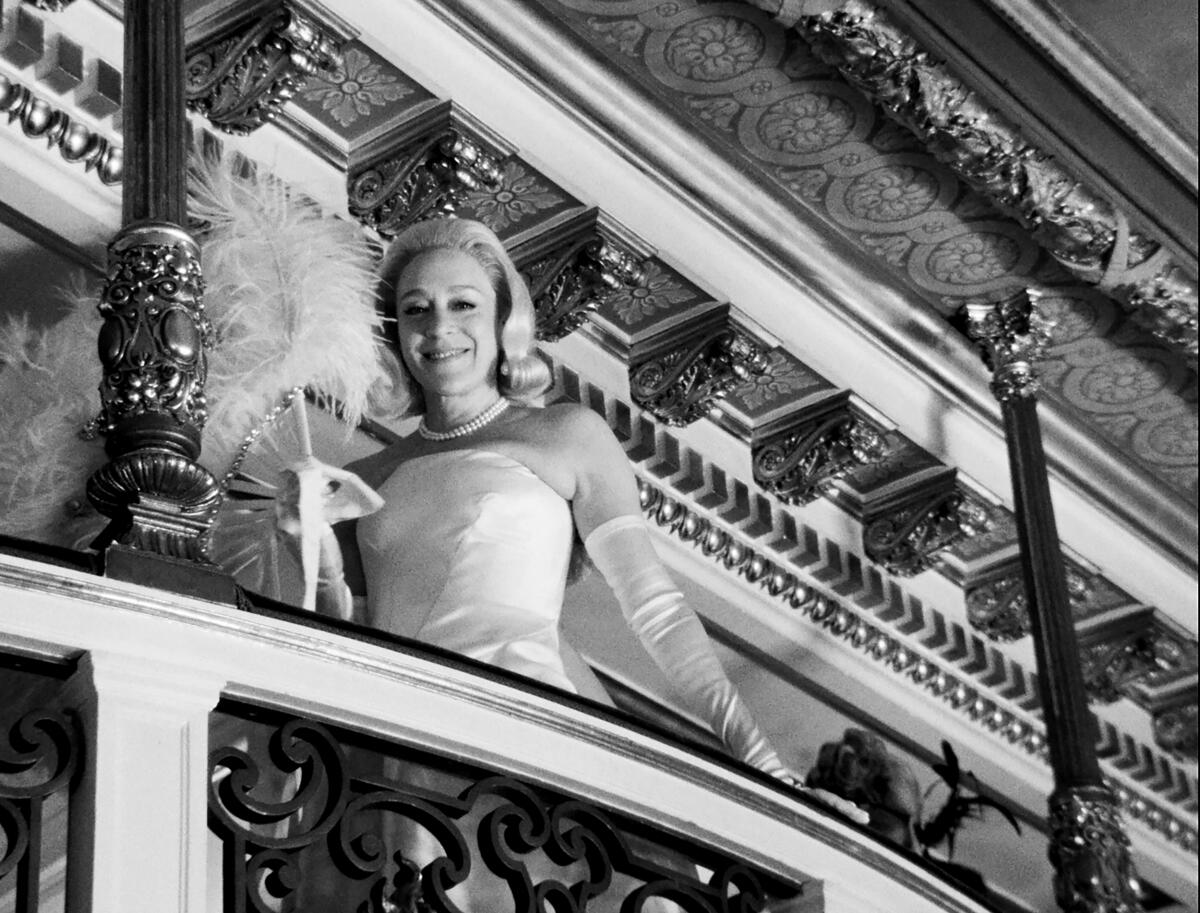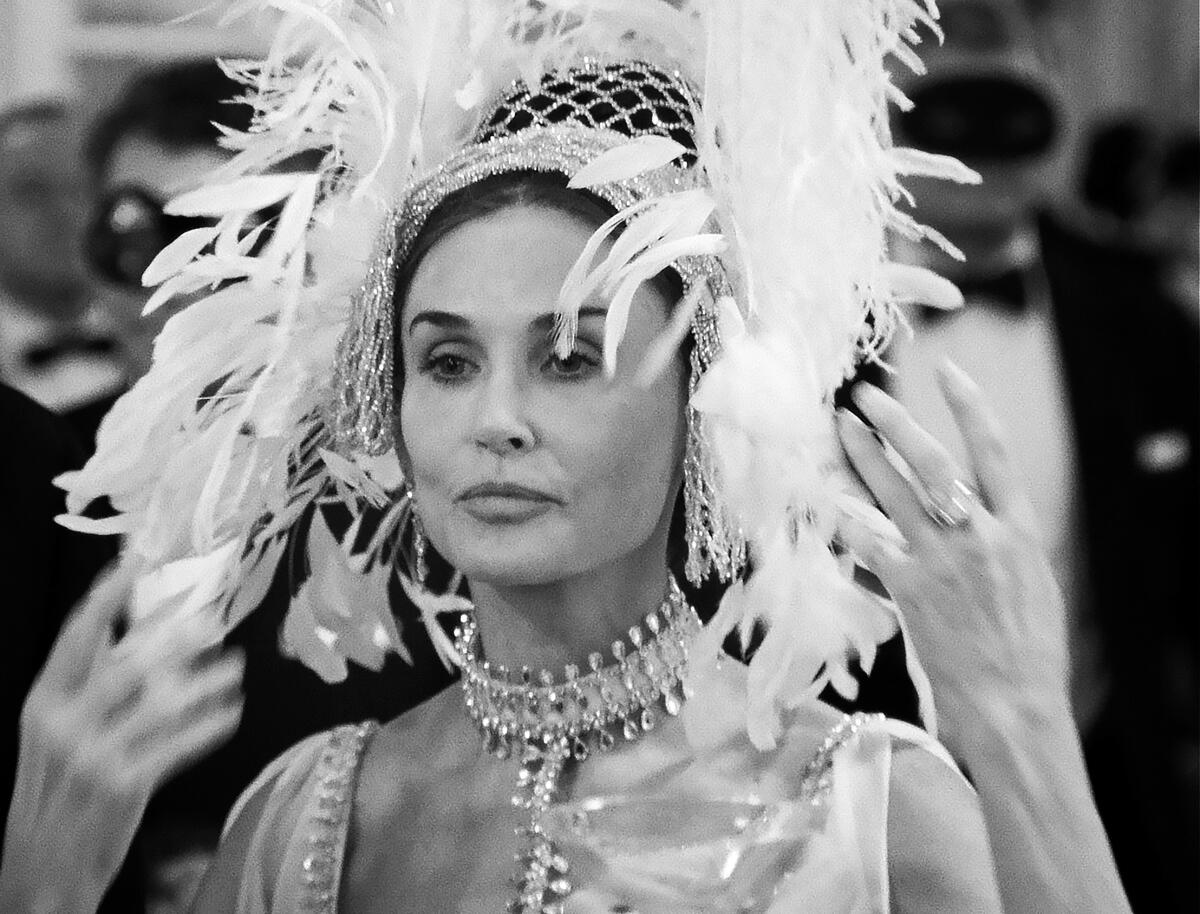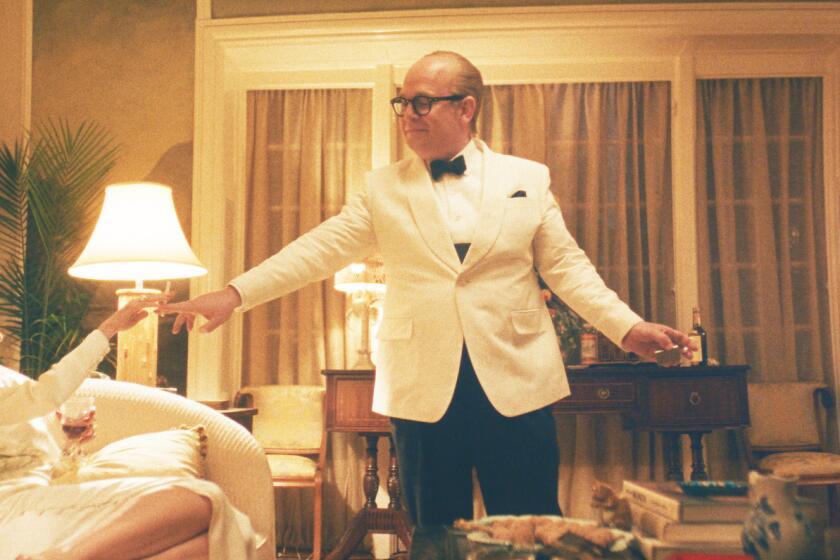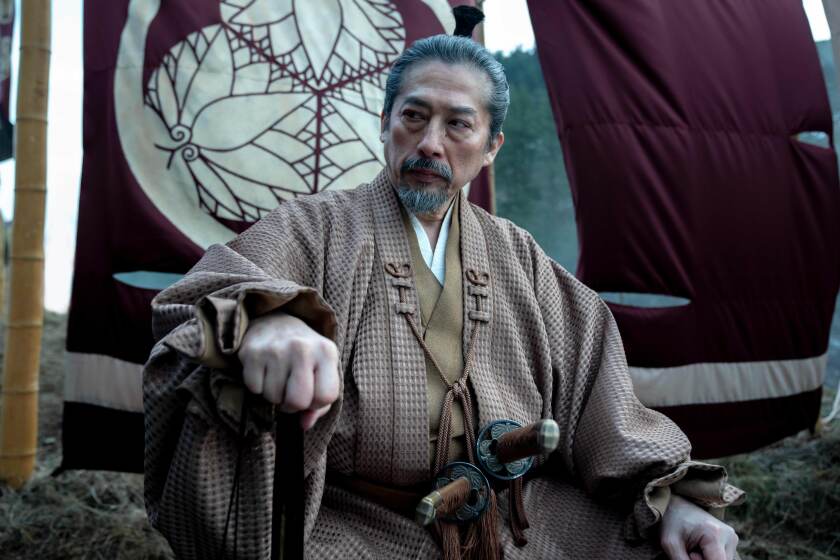Pride before the fall: How Capote’s ego took charge in Episode 3 flashback of ‘Feud’

- Share via
“It’s the gateway drug to the rush of being an enfant terrible,” is how writer Jon Robin Baitz describes Episode 3 of “Feud: Capote vs. the Swans,” called “Masquerade 1966,” a glimpse at Truman Capote’s famous who’s-who/who’s-not Black and White Ball. “It’s what happens when a writer with his talents becomes a kind of public figure, subsumed by being an arbiter of what matters and what doesn’t.”
The first two episodes laid out the in-decline Capote’s betrayal of his high-society clique’s secrets and its immediate aftershocks. Baitz and executive producer Ryan Murphy needed a contrasting flashback to when the author, played by Tom Hollander, was flush with attention and “dancing as fast as he can,” Baitz says. The self-mythologizing New York soirée he would throw was also, Baitz says, “the Titanic three nights before the iceberg.”
According to Baitz, it was Murphy’s “magnificent conceit” to contextualize “Masquerade 1966” as unseen footage shot by Albert and David Maysles, nonfiction filmmakers celebrated for the intimate style known as “direct cinema.” Hence, we see the black-and-white faux documentary that never was, but which might have shown a troublingly swollen ego eager to be immortalized. “The Maysles are figures of great integrity,” Baitz says, “so it’s interesting to put them up against Truman, who is unmanageable.”
In FX’s “Feud: Capote vs. the Swans,” the second season of Ryan Murphy’s anthology series, Tom Hollander plays Truman Capote, and Naomi Watts, Diane Lane, Chloë Sevigny, Molly Ringwald, Calista Flockhart and Demi Moore the women who are in and out of his life.
The idea for the episode wasn’t so fantastical, since the Maysles really did film Capote at the time during his “In Cold Blood” book tour, footage that Hollander mined for “the music of his voice,” the actor says. “It’s peak Truman, at his most alive, his most confident and most conceited. You can see how much he thinks of himself. It can only end badly.”
What director Gus Van Sant and cinematographer Jason McCormick had to do was re-create the look of a portable 16-millimeter camera shooting black-and-white Kodak film with an active zoom lens, the boxy frame a far cry from the widescreen, multihued glamour seen in the rest of the series. Also, with the block-shooting style of the production, “Masquerade 1966” scenes often found their way onto days with scenes from other episodes. But for McCormick, shifting to the faux documentary, near-improvisational feel of “Masquerade 1966” after so much careful, studious filming was “like playtime.”

“You’re going from a world of color, control and a camera much more composed, lit a certain way, to just smacking a light on the wall, not caring if there’s noise and grain, and it was totally liberating,” says McCormick of fulfilling Van Sant’s vision for the episode. “I could have shot like that forever.”
There was also the thrill for McCormick of operating the RED monochrome camera himself, playing the part of someone training a lens on Truman Capote as he dishes, dashes around and plays confidante to his nervous swans, each of them — Naomi Watts’ Babe Paley, Diane Lane’s Slim Keith, Calista Flockhart’s Lee Radziwill and Chloë Sevigny’s C.Z. Guest — suspicious of someone recording everything. It’s a constant interplay of performance and subtext.
“I went into that headspace of, ‘I’m one of the Maysles brothers,’” says McCormick, who would have to think like a documentarian on the fly while at the same time getting what the story needed. “It was a playful energy with the actors, and it was fun for them. They got to break the fourth wall. Seeing Naomi charge the camera trying to [stop the filming], you have to sell it. It’s so much about spontaneity. I have to pretend I don’t have it figured out. I can’t be perfectly in rhythm.” McCormick found himself operating in microseconds of reactivity to fake discovery. “It’s a subtle thing between reacting and anticipating.”
One such moment, a favorite of Baitz’s, occurs during the ball when Capote is drunk, dancing alone, talking to himself, and the camera “catches” the judgmental expression of Flockhart’s Radziwill watching him. “This is Gus’ genius,” Baitz says, “that the Maysles are capturing what’s under the surface of a scene. It’s how to make the camera do the work Truman’s not doing. It’s spying.”
Our BuzzMeter panel of veteran TV journalists and pundits offers their take on what will take the awards at the 2024 Emmys on Sept. 15.
What we learn, however, in the last moments, as we go from Maysles footage to Capote’s subjective view, is that his deceased mother (Jessica Lange) is with him, enjoying an elite life she could never achieve. “That was so clever,” Hollander says. “That the ball was for her. Lee is going, ‘Look at that poor drunk,’ and then the whole episode goes into color and you discover he’s not alone, he’s dancing with his mum. It’s so beautiful.”
Hollander and Lange rehearsed diligently for the sweeping crane shot upward that closes the episode, but the take they thought was perfect wasn’t the one used. “It was one where Jessica and I stepped on each other’s toes, got out of rhythm and we grimaced,” Hollander recalls. “But actors can never see what they’re part of because they’re doing it. The director has the godlike perspective, and Jason and Gus were moved. There were a few moments on the shoot where Gus was nearly crying, and that was one of them. Jessica and I would have gone, ‘Oh, darling, it was awful!’ But it wasn’t.”
It’s also an ending that, once more, in Baitz’s view, suggests a truth underneath, even beyond a documentary’s reach. “Truman is animated by the need for his mother’s approval,” Baitz says. “Suddenly, in color, even though it’s pure fantasy, that’s what’s real.”
More to Read
From the Oscars to the Emmys.
Get the Envelope newsletter for exclusive awards season coverage, behind-the-scenes stories from the Envelope podcast and columnist Glenn Whipp’s must-read analysis.
You may occasionally receive promotional content from the Los Angeles Times.












